Kingsbury K-Drive
The video below of the Human Power Team’s elliptical drive system is the first time I’ve seen a non-circular power system in motion.
Functionally identical to the “K-Drive” of the Kingsbury Kingcycle, the mechanism is first described in 1890, so it might be more correct to call it a “Vietor Elliptical Drive”, it’s best known as the “Kingsbury K-Drive” from Kingcycle’s successful use of it the early 1990s.
The chainring is connected to the primary crank spider as is normal, except that additional clearance is required between the crank and chainring for a secondary chain line.
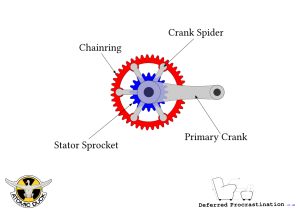 Primary Crank, Stator and Chainring
Primary Crank, Stator and Chainring
The K-drive additionally has a secondary, shorter, crank that is connected to it’s own sprocket. The secondary crank sprocket is linked by a fixed length chain back to a stationary sprocket (stator) around the axis of the bottom bracket.
Because the secondary crank’s sprocket is half the size of the stator sprocket, the secondary crank will make two rotations for every one that the primary crank makes, and in the opposite direction. This means that the pedal — at the end of the secondary crank — will follow an elliptical path around the chainring axis. If the primary and secondary cranks are the same length, then the path of the pedals will be linear.
While there may be some power benefits from linear or near-linear drive, it does have one clear benefit for fired vehicles. By reducing the vertical movement of the rider’s feet, the vertical clearance required for the rider is greatly reduced. This gives greater freedom of design for the nose shell.
Where a normal crank requires clearance for the rider’s foot an addition to the diameter of the crank’s rotation, the K-Drive only requires foot clearance plus the maximum vertical travel of the pedals ellipse. Assuming a total of 30cm foot clearance, a normal drive would need 64cm for clear motion, but with a 5cm high ellipse, an equivalent K-Drive would need only 35cm. That’s a 45% reduction in height!
Other that a few concepts and and some racing bikes, this drive system doesn’t seem to have been used much, despite it’s engineering elegance. I particularly like LucaBike’s use of toothed belts instead of chains.
Has anyone ever manufactured this type of drive commercially?
How does it fare in use? Is it reliable?
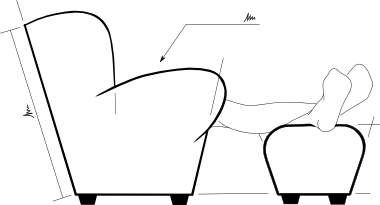
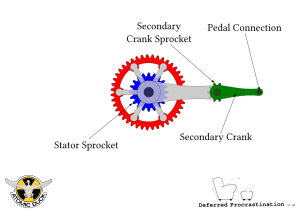
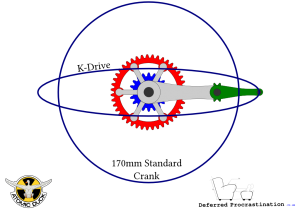
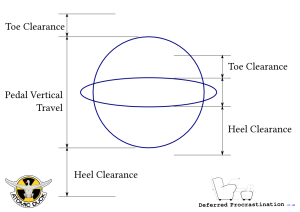
Jason wrote, “It would be great to have a velo where your heels don't peek out the bottom. You can get a different nose shape, but it looks like your knees will dictate height towards the rider - especially as diagrammed with additional rearward travel. I am having difficulty picturing how the decreased leverage on the power stroke effects the drivetrain and the rider. After all, in the middle of it, the drivetrain has leverage on you!”